There are few religious festivals you can bring a towel to.
There are even fewer you can insult a fireman at.
The Fogueres de San Joan festival commemorates the birth of Saint John the Baptist, born six months before Jesus of Nazareth.
The Gospel of Luke proclaims that the Baptist would be a ‘light to them that sit in darkness’ and the Catholic church has drawn people to these words by annually lighting bonfires on the vigil of the Saint John’s birth.
Whether the Saint would endorse present-day celebrations in Alicante, the biggest in all of Spain, is like asking whether Jesus would sponsor Monty Python’s Life of Brian.
The celebration last week saw 180 avant-garde sculptures set ablaze in the middle of dense city streets.
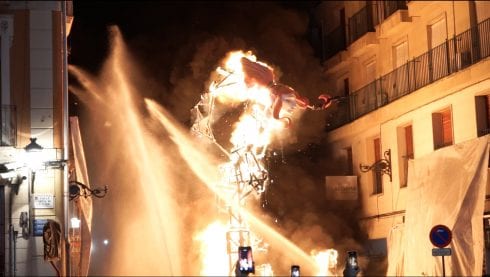
The plastic shutters of buildings melted in the fires, children as young as three hopped and skipped upon pop-its, and even grandparents shouted ‘coño de tu madre’ at fireman who blasted them with water until four in the morning.
As bulldozers heaped smouldering beams of wood onto a truck right outside the Town Hall of Alicante, teens were still smooching in the alleyways and soaked parents were still pushing prams.
In the words of one British-Basque tourist named Eguzki: “But this is Spain, and I love it.”
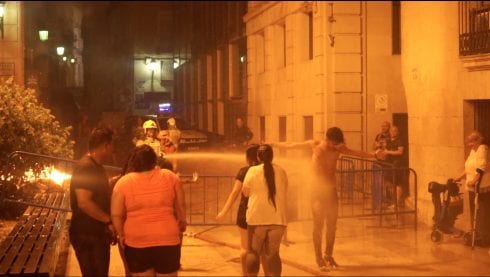
Standing next to his infant son, Eguzki reminisced about the days when he too was in a pram, while his parents got soaked by gleeful fireman at four in the morning.
“It’s insane. But imagine if this was in Croydon?” he told the Olive Press.
“There’s no way you’d see children and grandparents out this late without fear – to me, that’s what’s really insane.”
But the festival was not all mayhem.
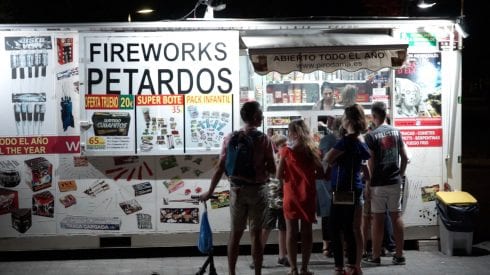
Its birth dates back to 1928, when Jose María Py felt Alicante needed a special fiesta, something no other place had.
Valencia already had the falles festival, and so Py adopted the tradition and made it distinctly and notoriously Alacantino.
“Please don’t call the sculptures falles when you’re in Alicante, because they’ll kill you,” a Valencian, named Juan, told the Olive Press.
The correct name, of course, is hogueras – or, even better, fogueres in Valenciano.
But standing before the 1st place winner in the ‘cultural and artistic beauty’ category, it became clear that these sculptures are far more than just cultural kindling.

“Medusa turned to stone anyone who dared look at her,” read the description before a 25-foot sculpture of the serpent-haired Greek goddess.
“Today, many things leave us paralyzed: injustice, corruption, politics, television, society.
“It depends on us whether we choose to be the Perseus that can stand up to her.”
Poems dotted about the goddess’ violent hair then call on us, as a modern-day Perseus, to destroy ‘fake news’ and online ‘trolls’.
Before another foguer down the next block, an information board asked us ‘What kind of politician are you?’
Question 3 read: “If you had the opportunity to let an American company build a mega-resort on San Juan beach, what would you do?”
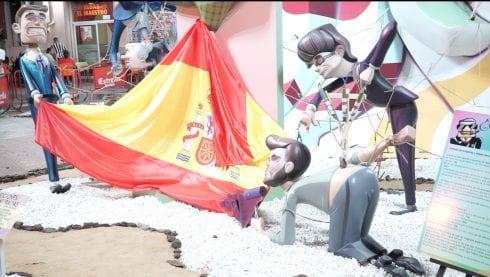
If you answered ‘I would do whatever it takes to change the law to benefit myself’ you got 40 points; if you answered ‘Our coastlines are inviolable and inalienable’ you got 10 points.
Needless to say, top marks made you a ‘corrupt politician’ and least marks made you an ‘honourable politician, under threat of extinction’.
This is really what the Fogueres were about.
And this is something I would wager Saint John the Baptist himself, beheaded for denouncing the tetrarch Herod Antipas, may just be inclined to endorse.
“It’s so crazy, but love it. I’m from Denmark, and our festivals are so boring,” Malou, a Dane studying in Alicante, told the Olive Press.
“I came for the first time last year, and now I don’t want to leave, ever.”
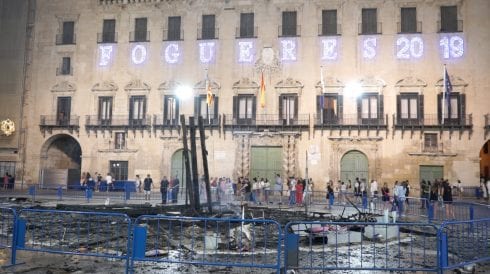
It is strange that a monumental festival with rebellious influences is officially sanctioned and the biggest bonfire takes place in front of the Town Hall – the very seat of order and regulation.
But, remember, this is Spain – perhaps they know some secrets that keep teen and grandparent, artist and politician, and tourist and local returning to a festival with a history dating back to just over 2019 years ago.
It’s something I would definitely bring a towel to, and perhaps even one for my children.
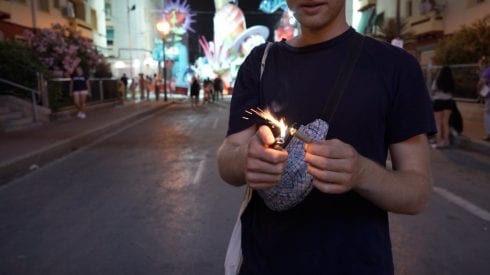
Click here to read more Spain News from The Olive Press.








